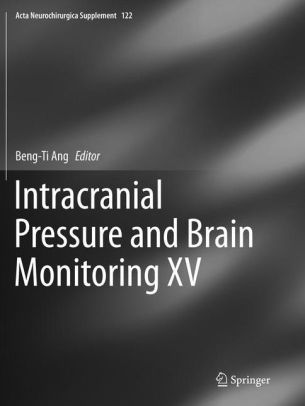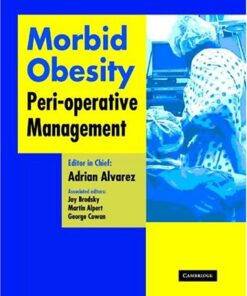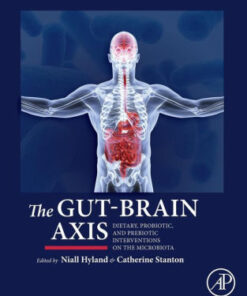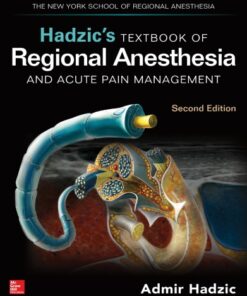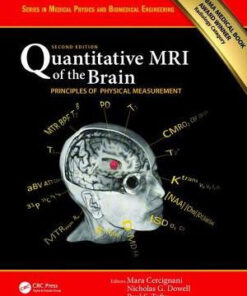(PDF) Intracranial Pressure and Brain Monitoring XV by Beng-Ti Ang
$15.00
Download instantly Intracranial Pressure and Brain Monitoring XV by Beng-Ti Ang. It is ebook in PDF format.
ISBN-10: 3319794094 ISBN-13: 9783319794099
Preview
This is the PDF eBook version for Intracranial Pressure and Brain Monitoring XV by Beng-Ti Ang
Table of Contents
PART 1 Acute Brain Pathologies – Treatment and Outcome.- Mechanism of Traumatic Brain injury at distant locations after exposure to blast waves: Preliminary results from animal and phantom experiments.- Early Changes in Brain Oxygen Tension May Predict Outcome Following Severe Traumatic Brain Injury.- Attitudes in 2013 to Monitoring Intracranial Pressure Monitoring for Traumatic Intracerebral Haemorrhage.- Topical therapy following an acute experimental head injury with mesenchymal stem cells (MSCs) has benefits in motor-behavioural tests for rodents.- Drag Reducing Polymer Enhances Microvascular Perfusion in the Traumatized Brain with Intracranial Hypertension.- PART 2 Clinical Monitoring of Intracranial Pressure.- Continuous Monitoring of the Complexity of Intracranial Pressure after Head Injury.- Characterization of Supra and Infra-Tentorial ICP Profiles.- Multi-resolution convolution methodology for ICP waveform morphology analysis.- Evaluation of Intracranial Pressure in Different Body Postures and Disease Entities.- Identification of clinically relevant groups of patients through the application of cluster analysis to a complex traumatic brain injury data set.- CSF lumbar drainage: a safe surgical option in refractory intracranial hypertension associated with acute post-traumatic external hydrocephalus.- Intracranial Pressure Waveforms are More Closely Related to Central Aortic than Radial Pressure Waveforms: Implications to Pathophysiology and Therapy.- Noninvasive Intracranial Pressure Determination in Patients with Subarachnoid Hemorrhage.- Non-Invasive Assessment of ICP – Evaluation on new TBI Data Material.- Real-Time Processing of Continuous Physiological Signals in a Neurocritical Care Unit on a Stream Data Analytics Platform.- The correlation between intracranial pressure and cerebral blood flow velocity during ICP plateau waves.- Outcome Prediction for Traumatic Brain Injury Patients with Dynamic Features from Intracranial Pressure and Arterial Blood Pressure Signals: A Gaussian Process Approach.- Validation of a new noninvasive intracranial pressure monitoring method by direct comparison with an invasive technique.- Validation of a new minimally invasive intracranial pressure monitoring method by direct comparison with an invasive technique.- Monitoring of Intracranial Pressure in Meningitis PART3 Special Topics in Intracranial Pressure Science.- Bernoulli’s Principle Applied To Brain’s Fluids: Intracranial Pressure Does Not Drive Cerebral Perfusion Or CSF Flow.- ‘Solid red line’-an observational study on death from refractory intracranial hypertension.- Patient-Specific Thresholds and Doses of Intracranial Hypertension in Severe Traumatic Brain Injury.- Characterization of ICP behavior in an experimental model of hemorrhagic stroke in rats.- Intrahospital transfer of patients with traumatic brain injury: increase of intracranial pressure.- Early cognitive domain deficits in patients with aneurysmal subarachnoid hemorrhage are correlated with functional status.- Brain Oxygen Relationship to Cerebral Perfusion Pressure Depends on Tip Location and Time Window: Can Brain O2 be an adjunctive modality for determining optimal CPP?.- The interaction between heart systole and cerebral circulation during lower body negative pressure test.- Plateau Waves of Intracranial Pressure and Multimodal Brain Monitoring.- The diastolic closing margin is associated with intraventricular hemorrhage in premature infants.- The ontogeny of cerebrovascular pressure autoregulation in premature infants.- Finite Element Model for Hydrocephalus and Idiopathic Intracranial Hypertension.- External ventricular catheter placement: How to improve.- PART4 Autoregulation and Experimental Studies in Brain Injury.- Change in Pulsatile Cerebral Arterial Pressure and Flow Waves as a Therapeutic Strategy?- Increasing intracranial pressure after head injury: Impact on respiratory oscillations in cerebral blood flow velocity.- Plateau Waves of Intracranial Pressure and Partial Pressure of Cerebral Oxygen.- Is impaired autoregulation associated with mortality in patients with severe cerebral diseases?.- Continuous optimal CPP based on minute-by-minute monitoring data: a study on a pediatric population.- Effects of brain temperature on cerebrovascular autoregulation during the acute stage of severe traumatic brain injury.- Monitoring cerebral autoregulation after subarachnoid hemorrhage.- Correlation between cerebral autoregulation and carbon dioxide reactivity on patients with traumatic brain injury.- Cerebral arterial time constant recorded from MCA and PICA in normal subjects.- Cerebral Critical Closing Pressure during Infusion Tests.- Outcome, Pressure Reactivity and Optimal Cerebral Perfusion Pressure Calculation in Traumatic Brain Injury: A Comparison of two Variants.- Identification of an Intracranial Pressure Response Function from Continuously Acquired Electroencephalographic and Intracranial Pressure Signals in Burst-Suppressed Patients.- The upper limit of cerebral blood flow autoregulation is decreased with elevations in intracranial pressure.- Derangement of cerebral blood flow autoregulation during intracranial pressure plateau waves as detected by time and frequency based methods.- State of Cerebrovascular Autoregulation Correlates To Outcome In Severe Infant/Pediatric Traumatic Brain Injury.- Can optimal cerebral perfusion pressure in severe traumatic brain injury patients be calculated based on minute-by-minute monitoring data?.- The ontogeny of cerebrovascular critical closing pressure.- Dynamic Cerebrovascular and Intracranial Pressure Reactivity Assessment of Impaired Cerebrovascular Autoregulation in Intracranial Hypertension.- PART 5 Biophysics and Experimental Aspects ofIntracranial Pressure.- Automatic Calculation of Hydrostatic Pressure Gradient in Head Injured Patients: A Pilot Study.- The prediction of shunt response in idiopathic normal pressure hydrocephalus based on intracranial pressure monitoring and lumbar infusion.- Intracranial hypertension is painless!.- The effect of body position on intraocular and intracranial pressures in rabbits.- Monoamine neurotransmitter metabolites concentration as a marker of cerebrospinal fluid volume changes.- Disproportionately enlarged subarachnoid-space hydrocephalus in idiopathic normal pressure hydrocephalus and its implication in pathogenesis.- Characterization of Cerebral Vascular Response to EEG Bursts Using ICP Pulse Waveform Template Matching.- Tranc-ependimal movement of cerebro-spinal fluid in neurologic and psychiatric pathologies.- Artifact in physiological data collected from brain injured patients: quantifying the problem and providing a solution through a factorial switching linear dynamical systems approach.- Central Pulsatile Pressure and Flow Relationship in Time and Frequency Domain to Characterise Hydraulic Input to the Brain and Cerebral Vascular Impedance.- Reproduction of ICP Waveform Changes in a Mathematical Model of the Cerebrospinal Circulatory System.- Accuracy, precision, sensitivity and specificity of non-invasive ICP absolute value measurements.- Measurement of intraspinal pressure after spinal cord injury: technical note from the Injured Spinal Cord Pressure Evaluation Study.- Characterization of the Intracranial Pressure Behavior in Chronic Epileptic Animals: a Preliminary Study.- Waveform Analysis of Intra Spinal Pressure after Traumatic Spinal Cord Injury- an Observational Study (O-64).- Relative Position of the Third Characteristic Peak of the Intracranial Pressure Pulse Waveform Morphology Differentiates Normal Pressure Hydrocephalus Shunt Responders and Non-Responders.- Who needs a revision? 20 years of Cambridge Shunt Lab (O-69).- Shunt testing in-vivo: problems with ventricular catheter- observational study. (O-70).- NPH Case Report:A Documented Self Story over Eight Years with my Observations.
